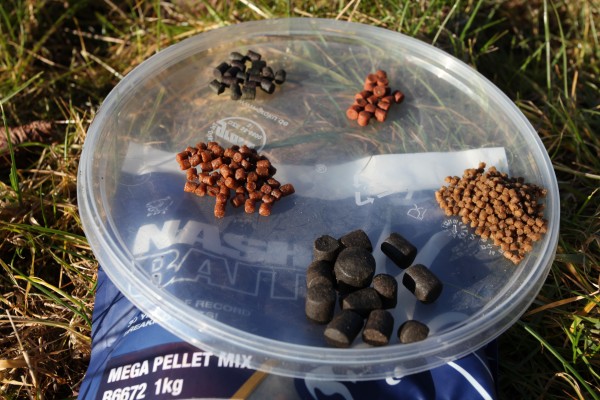FLORIDA BASS
Question
WHAT IS THE MOST EFFECTIVE METHOD FOR SMALL LAKE FISHING FOR LARGEMOUTH BASS? IS IT A PLASTIC WORM RIG, AND HOW WOULD YOU SET IT UP ?
ALSO THE RETRIEVE, SLOW , FAST, OR ARTIFICIAL LURES, AND WHAT WPIULD YOU SUGGEST ?
THANX RAY !!!!
Answer
As a bass fisherman, you'll find that there really is no singular golden method that is absolutely efective above all others. Instead, you have to learn a series of techniques that allow you to adapt to conditions if you want to achieve consistency as an angler. For instance, while the plastic worm is one of the most effective finesse lures, it is too time consuming to use to locate fish. On the same note, a spinnerbait is a great lure to use to cover water, but lacks the finesse of a plastic worm or a bass jig. So in order to adapt to conditions and locate fish you need to know a variety of techniques and a basic strategy to apply them.
The first thing to take into consideration is the weather and how it effects where you're going to be fishing. If you're experiencing a cold front, bass are going to typically hold tight to cover and go deep. During this period of time they aren't very active, making lures like spinner baits, crankbaits, and topwaters (which all pretty much rely on the fish being active) rather ineffective choices unless worked very slowly. Instead you should use a sonar (if you have one... a fishfinder comes in handy, but often knowledge of the body of water and/or a topographical map can substitute well in it's place) to locate abrupt changes in depth, the creek channel, and spots of isolated underwater vegetation in water from 8-15 ft or so deep depending upon the body of water. When you find these areas, you'll often find fish. In a cold front it's a good idea to work a slow presentation with more finesse oriented lures. Lures like Carolina rigged plastic worms/lizards, pig'n'jigs, sinking minnows, carolina rigged sluggos are all effective in these situations.
Under normal conditions, though, you typically rely on lures you can fish quickly to locate fish. During typical hot summer weather, finding feeding bass in the early morning and at dusk isn't that difficult, and by adapting the same strategy it isn't impossible during the day either. The idea is that in finding areas likely to hold fish and throwing a spinner bait or a crankbait atleast one fish in a group is going to be active, providing the strike, and thus showing you where there are fish. Once you locate a group of fish, use similar techniques as I mentioned for fishing a cold front, but fish them quicker, as the fishs' metabolisms are going to be higher, thus driving them to chase down prey. Also, once you've located fish, it's likely that there will be fish holding in similar areas throughout the lake at that time of the day. So if Spot B is similar to Spot A and you've exhausted Spot A, go to Spot B, it's likely to be holding active fish as well.
Plastic worms can be rigged countless ways, but there are two primary rigs most worthy of mention. For a more exciting, fast, darting retrieval (best with active fish, or if the Carolina rig fails, annoying innactive fish into striking) try the Texas rig. The Texas rig consists of a free moving bullet weight on the line directly above a worm hook. Pick up a pack of worm hooks and notice how the shank curves 90 degrees directly below the eye. Run the tip of the hook through the plastic worm at the head and out through the side of the worm about 1/8 in down, so that the the curve in the hook exits the worm at 90 degrees. Feed the hook back through the body of the worm so that the tip is just barely sticking out the other side. Then, insert the barb of the hook just ever so slightly back into the worm to prevent it from hanging up on vegetation. A Carolina rig is identical to a Texas rig except that the bullet weight is "pegged" anywhere from about 6-18" above the head of the worm. This allows for a slower, free falling presentation. There are a number of ways to peg a sinker, but the easiest is to simple push a tooth pick into the hole from the bottom toward the front, snapping it off, leaving little hanging out. It can be adjusted up and down on the line, but will stay wherever you leave it.
These are just some of the basics to strategy and adapting to conditions and plastic worm rigs. If you have any more questions, I'd be glad to answer them in depth. Follow the basic strategies, but after a little while, experiment a little bit. If you just need simple questions answered, just swing by your local sporting goods store. It's typically best to go to one of the better "ma and pa" owned stores because the guys running them are fishermen too, and many of them tend to be really good fishermen. But anything else you have questions about, feel free to ask here as well. I hope I was of some help, if not, ask about whatever specifics I may have neglected and I'll be glad to answer to the best of my ability.
Thanks for asking and good luck!
Chris
Korea
purchasing a saltwater fishing rod and reel


